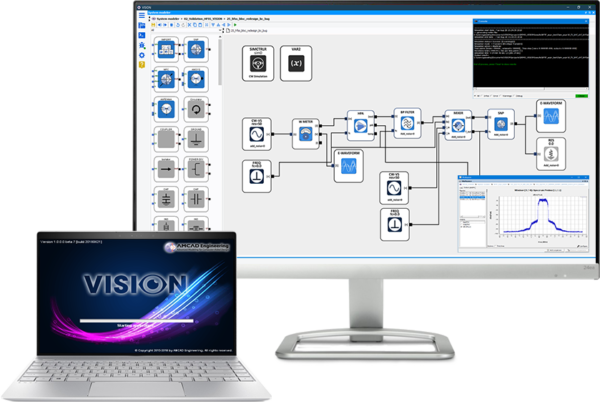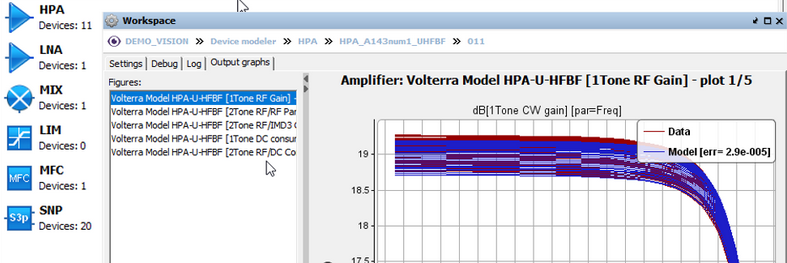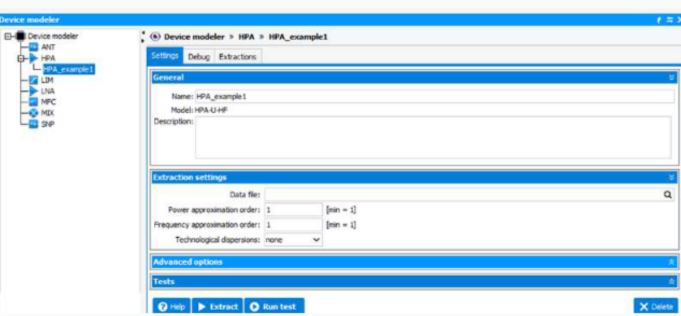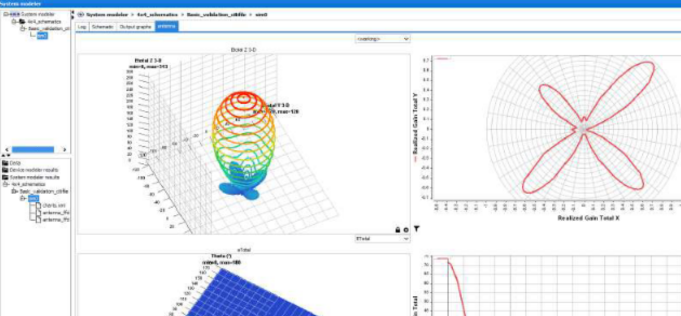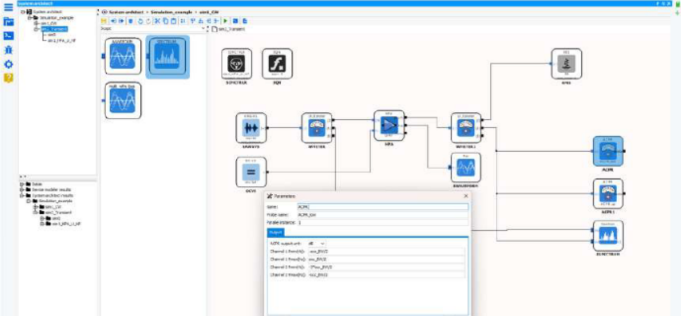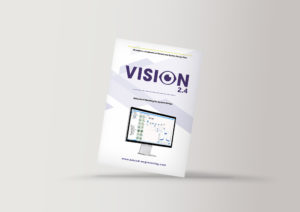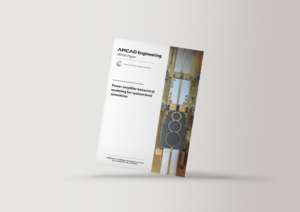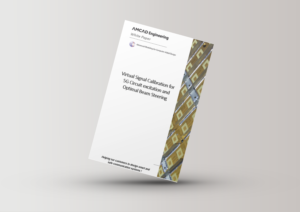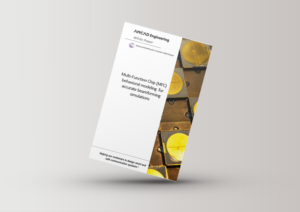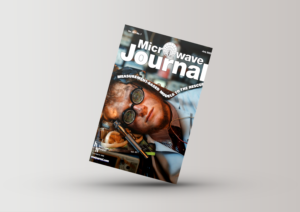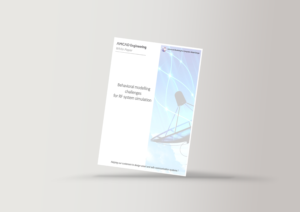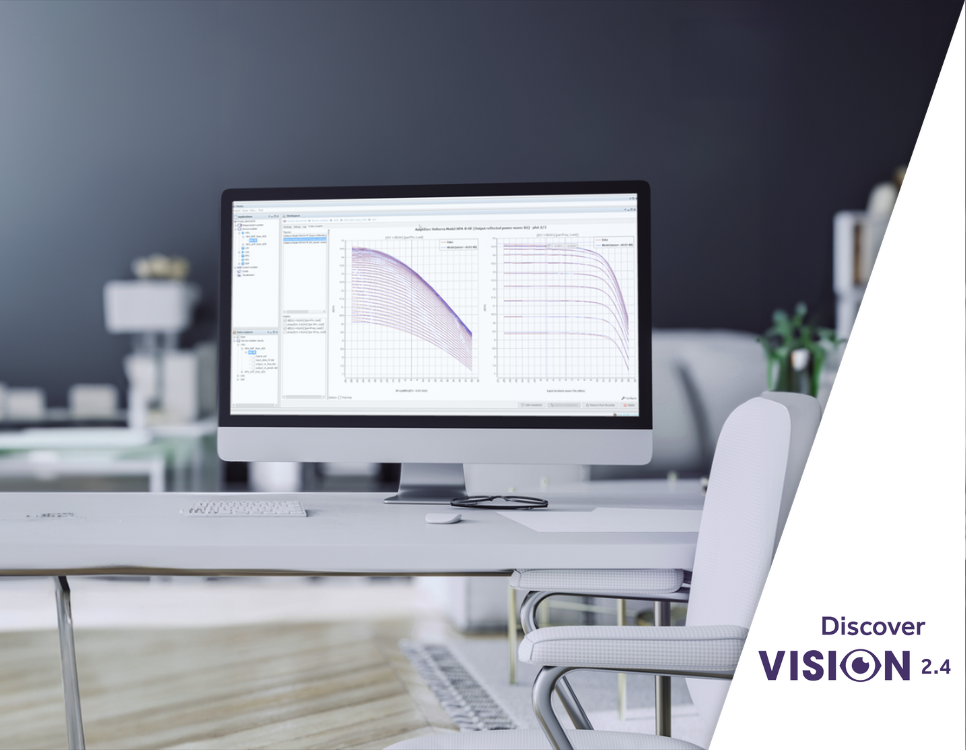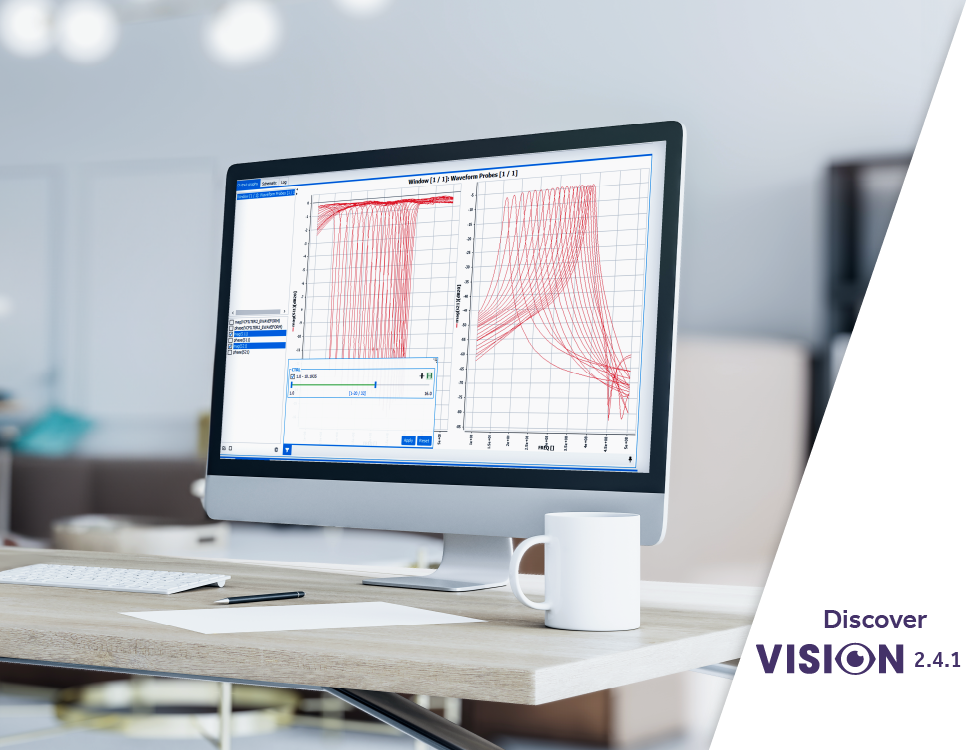
Key features:
VISION is a unique comprehensive modeling platform that makes system simulation reliable enough to replace costly measurement tasks of large system architectures.
VISION offers a comprehensive methodology to extract complete and accurate RF & MW circuit behavioral models which take into account all observed phenomena.
VISION enables leveraging circuit models to design complex system architectures using its schematic editor to ensure a reliable bottom-up design flow process.
- Turn-key circuit and system-level modeling environment.
- Measurement Benches control for model extraction and validation.
- Device modeler toolbox for active and passive circuits (LNAs, HPAs, Filters, Mixers…)
- System-Level Macro-Modeling solutions and direct export functionalities to main commercial system simulators.

